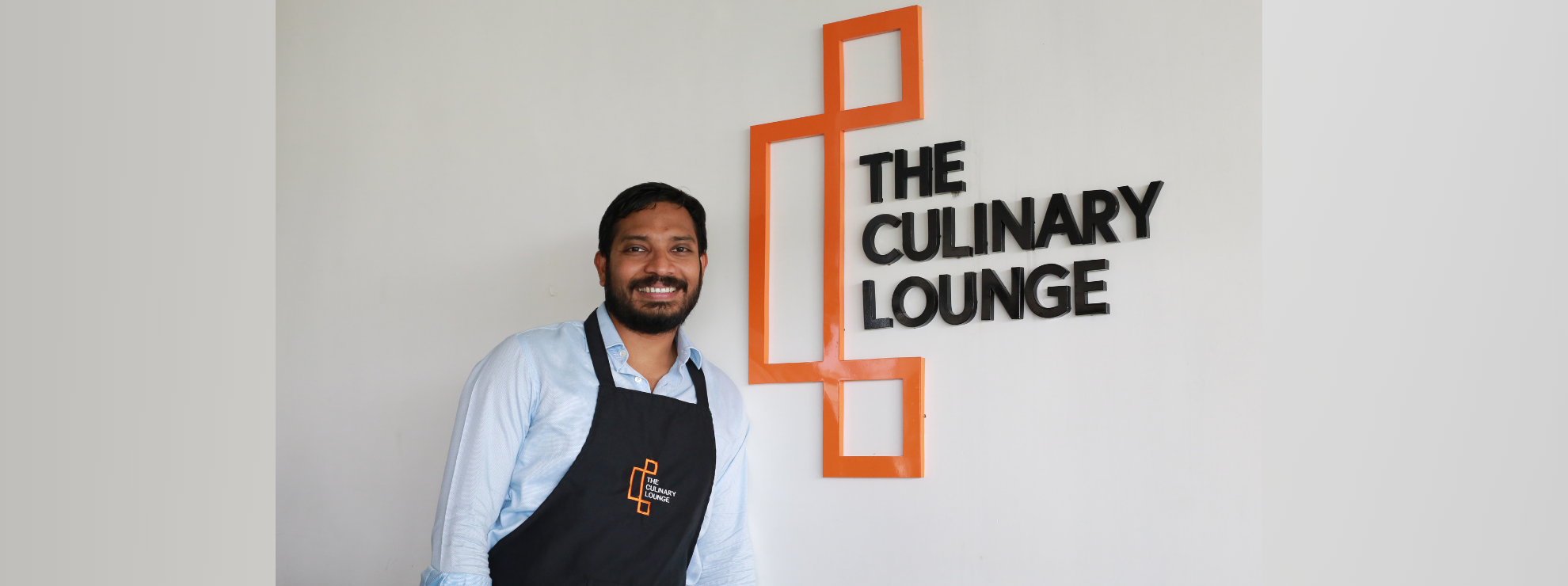(May 24, 2024) “I only know four things: people, books, food, and movies,” smiles Gopi Byluppala, a Hyderabad-based entrepreneur whose work revolves around all things food, traditional meals, and recipes, as well as culinary conversations. The 40-year-old, who has founded Hyderabad’s experimental Culinary Lounge, is also working with the government of the Netherlands to find areas of synergy between Hyderabad and Amsterdam, as he believes that food is the only bridge that can connect people from diverse walks of life.
As he pours Nannari sherbet into a glass (earlier found only in the Rayalaseema region of Andhra Pradesh and something this writer cherished in childhood summers spent in Hindupur), he says that food is the very essence of our being.

Gopi Byluppalla, founder, The Culinary Lounge
“Each time I invite people for a meal and they try some long-forgotten recipes or dishes that are no longer made, it transports them to their happiest memories—many say that the food reminds them of their mothers or grandmothers. Or they share their own recollections. Look at our conversation, I mentioned Nannari, and you said you always had it with milk, which was a revelation as I knew it only to be served with soda. Food is the ultimate uniting force,” he tells Global Indian.
Sensory recollections
Growing up in a joint family in Kakinada, where the kitchen was bigger than the living room, Gopi Byluppalla recalls spending a lot of time around food. He reminisces, “My mother was always in the kitchen, preparing breakfast, lunch, snacks, and then dinner, so I used to spend a lot of time in the kitchen to be close to her.”
It was this early exposure that had a great effect on the young Gopi, who wanted to become a chef as early as when he was eight-years-old and loved whipping up his favorite dish (maggi). Fate (and his father), however, had different plans, and he ended up studying engineering at the University of Madras and working at Oracle for a decade.
It was in 2014, when he was shuttling between Hyderabad and Philadelphia (where his wife Swathi worked), that he decided to indulge in his love for food. “After living the corporate life for a decade, I understood that my heart did not lie in it and wanted to pursue a career among my passions,” he shares.

Gopi Byluppalla, founder of Culinary Lounge
Turning passion into profession
Combining two of his loves—food and people—the entrepreneur started his first start-up in 2014, Feazt, a unique platform where strangers were invited for a home-cooked meal to bond over food. His first pop-up was called Coconada Meal (the British name for Kakinada), where he served food made by his mother.
“It was an event like no other,” Gopi smiles as he recalls and adds, “I remember my mother wondering if people would pay Rs 500 for a home-cooked meal, but I was sure that there would be an audience. My mother was ecstatic when a young girl hugged her after tasting her Royyala koora (prawn curry) and said that it was so different from what one found at restaurants.”
The concept was a big hit and had only one rule – people should come alone and no guests should know one other – as the idea was to meet like-minded people and not hang out with your existing friends. Another initiative that was unique was Handi Talks (similar to Ted Talks) but focused on food, where entrepreneurs, bakers, chefs, and restaurant owners came together, creating an eco-system of people passionate about food and also sharing knowledge and insights with a close-knit audience.
People and food
In a quest to bring the idea of connecting people and food together, the entrepreneur started Culinary Lounge in 2018. It is an eclectic idea where food takes center stage—where chefs can host pop-ups for specific foods, where people could learn cooking, and where corporates can bring teams for interactive sessions. In fact, the center has played host to many top companies, including Deloitte, PepsiCo, and Google, among others, where leaders can reconnect with their teams over a host of activities, from cooking together to sessions on food histories.
View this post on Instagram
Apart from companies, Culinary Longue has also played host to delegations from Korea, Japan, Thailand, and the Netherlands, where chefs explore and experiment with Indian food. It has also seen book launches and gatherings by gourmands.
It was through one such delegation from the Netherlands, which prompted his move to Amsterdam in 2022, where he is working extensively on building a culinary corridor to Hyderabad.
He states, “Amsterdam has a rich profusion of Michelin-starred restaurants, world-class bartenders, and some of the best breweries in the world. Hyderabad has a great nightlife scene, and I see a great opportunity for cross-pollination, where Hyderabadis can experience the best of nightlife from abroad and Amsterdam gets a taste of local Hyderabadi favorites like Biryani, Paya, Marag, Gongura, and Pachi Pulusu.”
Is food the ultimate soft power – absolutely says Gopi and adds, “Food is the greatest ice-breaker and tailor made for culinary diplomacy. A great example is the Thai government, which, under the Thai Select Program, started over 100,000 restaurants in the US, resulting in an explosion of interest for Thailand in the US/ Look at how K-Pop, Ramen, and K-drama resulted in a boom in Korea’s tourism!”
A mammoth undertaking
Currently shuttling between Hyderabad and Amsterdam, Gopi Byluppalla is also busy with his current initiative, Onamalu (which translates to fundamentals in Telugu), which aims to document the history of Telugu food from the year 1750 onwards. With the help of a team of chefs, historians, and enthusiasts who will travel the length and breadth of Telugu states—from Telangana to coastal Andhra and Rayalseema to tribal food—it aims to document the lore and legacy of Telugu food.
View this post on Instagram
Quiz about his continuing obsession with food, and he simply smiles, adding, “In a world full of differences, food can be the unifying factor. We Indians are so fond of Italian and Korean food that I want to ensure that my rich Telugu cuisine is also one day as popular as theirs across the world. Good food can bring us together.”
It is this belief that drives Gopi Byluppalla and gives him strength when he travels away from his young children (Veeksha, 7; Nikshit, 4). Building a community and introducing traditional food to younger generations moving away from it—this entrepreneur is all about creating a better world where we stay in touch with our roots and, of course, share stories over a meal.
- Follow The Culinary Lounge on Instagram.





Very well expressed! Wonderful to read on your passion for people who get connected without inhibitions mostly through food. Food is powerful and passion for home food, however, connects to one’s culture too. It’s heartening to know of your connections through food and your initiative of Onamaalu to put Telugu cuisine on the global platter. Wishing the best to you and your team. As a Telugu in my twilight years, if need be, shall share efforts in your endeavour to the best possible.